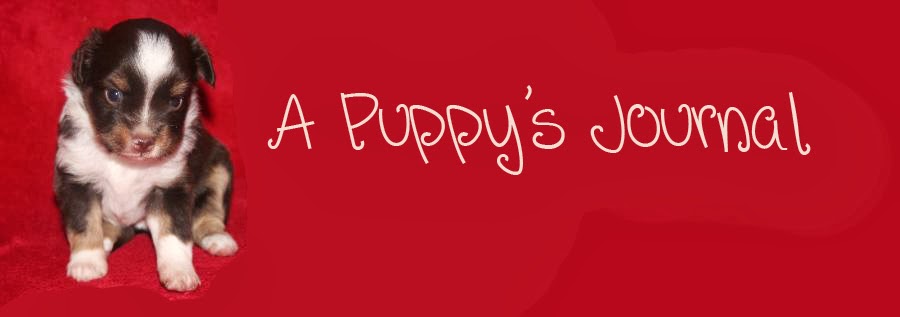 |
| Bella at 6 months, with a typical "can I play too?" look on her face. |
Her coat is growing out and she's soft and fluffy. Wonderful to cuddle with (when she's in the mood). She sleeps with me in my bed now, since she's housebroken (more or less). Housebreaking wasn't that hard, and she lets me know she needs to go out by standing by the door and making one sharp bark. Then she gives me "the look" (like in the picture). She's plainly saying that she has to go and she has to go now. If I ignore her, she feels no qualms about relieving herself on the floor. So I don't ignore her, needless to say! And when she says she has to go out, she means it. Every time. She hasn't asked to go out just to go out (at least not yet).
Her training seems to have gone a bit backwards now. She had sit down pat before but now looks at me as if to say, "I don't want to sit just now, thanks." She is ignoring the hand signal and the voice cue, unless she's sure there's a treat in my hand. Typical teen. Pay me for what I should be doing anyway.
Still, we've progressed. We go to a class once a week with two other puppies. She totally loses her cool for the first twenty minutes or so, screaming and yelping like she's never seen another dog before in her life and she absolutely must get over to them and explore. So we let them play for 5 minutes or so while we discuss how our training is going and what we're going to learn this time. It helps calm them down a bit. Billie, our trainer, keeps a supply of chews to give them something to concentrate on when we're talking. Smart lady!
So we have a solid recall, even through a group of dogs at the dog park; sit, down, leave it, zen, roll over and getting better on loose leash walking. I'm following Levels training, and it's really good. I'd highly recommend it to anyone looking for a good training method. Step-by-step instruction to get a solid base that has no training gaps.
That's all for now.

